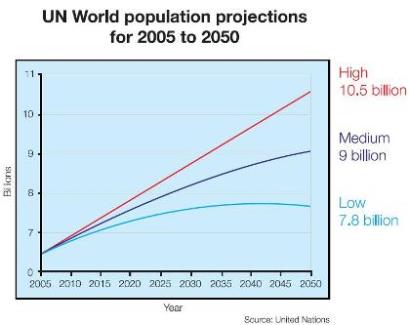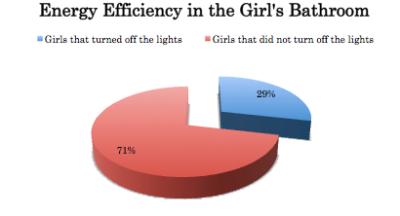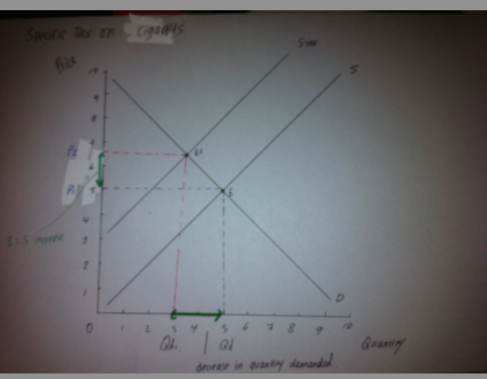Think Global Act Local
Light Energy Wastage at CA:
The world’s population had hit 7 billion in 2012 and is continuing to rapidly increase. According to United Nation’s prediction, the world’s population will exceed 9 billion by 2012 (Wikipedia). Many researches show that such massive increase in population is most likely to lead to depletion in scarce resources that are a necessity for human lives such as water, electricity and food.

To combat this issue, many countries on the globe has proposed many different solutions to reduce the energy consumption and increase energy efficiency within their country, and although there have been some visible success, I believe unless each and every individual of a society is aware, and willing to act against the issue it is impossible to prevent such resource depletion. As student of Canadian Academy, I felt the need to start the changes from our community – Canadian Academy. So, I I focused on energy consumption of lights at our school and investigated if we are using too much light at our school. The result was very disappointing and disturbing; it turned out that we are actually spending about twice as much as we actually need. According to a research, adequate amount of lighting in a studying area is around 350Lux and in our class room – Mr. Wagenaar’s science laboratory, there are 26 available lights and with all of them turned on, the amount of light is about 700Lux. Most of the time, the lights in Mr. Wagenaar’s room is fully turned on, meaning that we are wasting abut 450Lux of energy, constantly. I went around the school, counting lights and if teacher’s blinds or curtains were fully open to use as much natural light as possible and, more than 2/3 of the classrooms had all the lights turned on with blind fully or half way closed. These data clearly indicate that there is indeed an issue with wastage of light energy at our prestigious school, and there must be an end put to this shocking and upsetting reality of our school.
Possible General Solutions:
First of all, one of the most effective solution in cutting down energy consumption of lights at Canadian Academy is to change all the lights to energy efficient – LED models. The lights currently used at our school, for all buildings and classrooms are the fluorescent types which are relatively energy efficient compared to the standard incandescent ones. However, LED lights require half the wattage of the fluorescent bulbs and with all factors, life span and wattage etc. considered, “LED light bulbs are about 5 times more efficient than florescent lighting”, according to a website called Mega Volt (Payne). Second of all, at Canadian Academy, there are two light bulbs in one lighting space, and since my investigation has shown that we use about twice as much light energy as we really need too, we could take on out of that lighting space. Of course the amount of light bulbs we would need to take away per class depending on the class size. However, as I have found out that there are 26 available lights in Mr. Wagenaar’s room and that produces about 700 Lux, with calculation of 700/26, we can assume that one light bulb produces about 26.9Lux of light. Although this is just an estimate, we can predict how much light bulbs are needed in one room using the calculation I just stated.
Energy Wastage Specifically of Bathrooms and Solution:
Also to add to my investigation, I noticed that a lot of times when I go into a bathroom at school, even though there was no one in it until I entered, the lights are fully on. Same applies for class rooms, sometimes I notice teachers leaving the lights on when there is no one in their class rooms. One day during lunch, I stood in front of one of the girls bathroom from 12:50pm and counted the amount of people entering the bathroom and coming out and if they have turned the lights off when they left the bathroom. As a result, 7 groups of girls entered the bathroom, and only 2 of the groups had turned the lights off. Also, due to my gender I was not ale to collect data as I did for girl’s bathroom, I asked 7 random boys from High school at CA if they usually turn of the lights when they leave the bathroom if there is no one in the bathroom, and only 3 of them had answered yes.


This clearly proves that people tends to forget to turn off the lights and to prevent light energy wastage caused by such occurring at CA, I believe that there must be some sort of a rule, system to punish students or even teachers if they do not turn off the lights. For example, we could possibly have a school rule that students that enter the bathroom needs to sign in and out on a paper perhaps stuck to the bathroom door. This way if someone enters a bathroom and notice that that lights are on even though there is no one in the bathroom, they can find out who was the last person that entered the bathroom and therefore who exactly had not turned the lights off. Also, of course we could place posters saying “TURN OF THE LIGHTS” on a bathroom’s exit area to raise awareness and maybe have Ms. Vrba talk during assembly, however those things have been done already and have not succeeded.
Light Energy Wastage’s effects on Economical Factors of CA:
Overall energy wastage does not only affect the scarce resources and environmental issues but it affects school’s economical situation significantly. From the data our teacher, Mr. Wagenaar had provided us with I found out that all the lights bulbs used at CA is of 32w, and using an online resource I found out that if a one light bulb of CA’s is on from 8am to 4pm for a day it costs 4 yen per pay, and 123yen per month (電球豆知識(電気代計算シミュレーション)). This seems very little, however this is the cost for a single light bulb. For example, as I stated before, in Mr.Wagenaar’s room there are 26 light bulbs and so with calculation of 123yen times 26 light bulbs, it costs 3,190yen to have the lights on from 8am to 4pm for a month. There are many other science laboratory in CA and with all the lights around the school and in each class rooms, so with all of them added together the 123yen will increase to thousands of yen. All these cots added up together could potentially be an significant damage to school’s economical situation.
Revising Light Energy Wastage’s effects on Social Factors at CA:
By acknowledging the situation of light wastage at our school, and revising the light energy wastage at CA, not only does it benefit the environment and it’s resources, as well as CA economically but it can also benefit our school socially. By trying to reduce the energy consumption spent on lights possibly using the methods I discussed earlier, it will raise awareness of many different environmental issues other than the light energy wastage only, which I believe will lead CA to more eco-friendly community. Right now, only small portion of students who are extremely passionate about the environmental issues and eco-friendly actions, are acting against many environmental issues at CA. However for example, as I mentioned earlier as one of the solution to the issue , if all students and faculties of CA had to be eco-friendly by the school rule, they have no choice but to be environment-friendly; to turn the lights of when not needed, to separate garbage for recycling, to open the windows instead of turing the AC etc.
Conclusion / Decision about Effective Solution:
So to sum up, CA clearly has a issue with wasting light energy, in fact the data I collected show that in particular areas lights are used twice as it’s adequate amount. So to combat this issue, I listed some solutions such as; changing all the lights used at CA to more energy efficient – LED types, taking unnecessary light bulbs out, creating some kind of rule/ system hat ban people from keeping the lights off when unnecessary such as when leaving a classroom or bathroom with no body in it. I believe that to try to reduce the energy consumption of lights or even overall school’s the best solution is to eliminate all the unnecessary things and by using less-efficient fluorescent lights school is wasting light as well as money, and by using more light bulbs than needed the school is again wasting light as well as light and lastly having he lights on when not needed is clear waste too, so I believe that all the solutions I used should be employed at CA. However, changing the lights to LED is costly, and although this solution would be very effective since the LED lights are said to be 5times energy efficient than fluorescent it may be difficult (Payne). Also, creating a rule that practically forces all members of CA to turn the lights off when not needed, perhaps with some punishment, could possibly raise concern by some parents and the PTA and therefore it may also be difficult. On the other hand, taking the unnecessary light bulbs away will not cost a lot of money and has no harm to anyone. So in a conclusion, although it would be the best if all the solutions can be employed, at least as a starting solution of the issue, taking the necessary light bulbs away according to the estimation I made earlier may be the best solution in reducing energy consumptionof lights at CA.
Bibliography
電球豆知識(電気代計算シミュレーション). (n.d.). Retrieved May 19, 2012, from Akaricenter: http://www.akaricenter.com/mame/wattcalc.htm
Payne, M. (n.d.). LED Vs. Fluorescent Lighting. Retrieved May 19, 2012, from eHow.com: http://www.ehow.com/about_5452900_led-vs-fluorescent-lighting.html
Rowley, J. (2007, February 15). POPULATION SPECIAL REPORT UK parliamentarians deplore ‘the lost decade’. Retrieved May 20, 2012, from People&Planet: http://www.peopleandplanet.net/?lid=28482&topic=23§ion=33
World population. (2012, May 26). In Wikipedia, The Free Encyclopedia. Retrieved 07:50, May 26, 2012, from http://en.wikipedia.org/w/index.php?title=World_population&oldid=494419258















